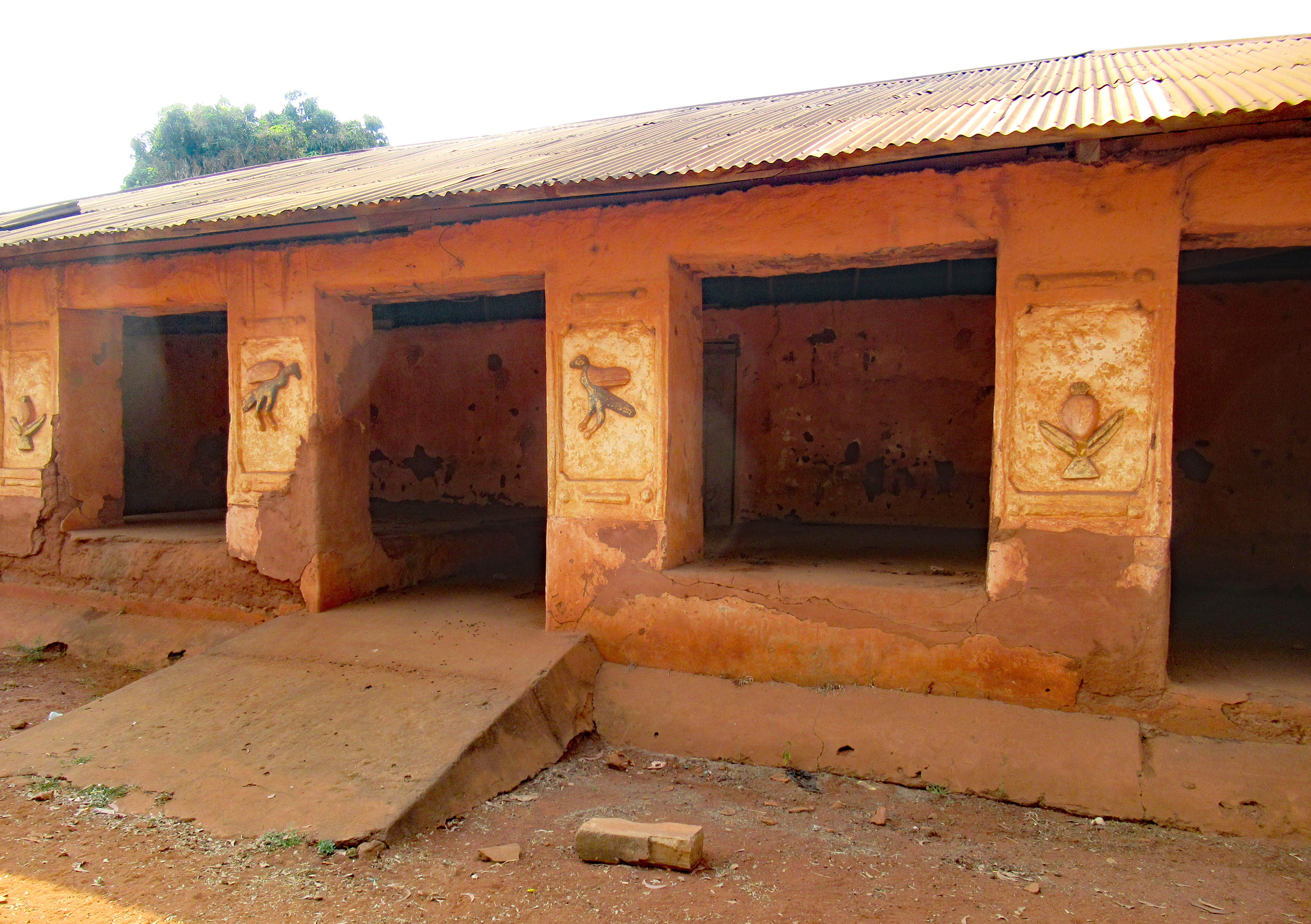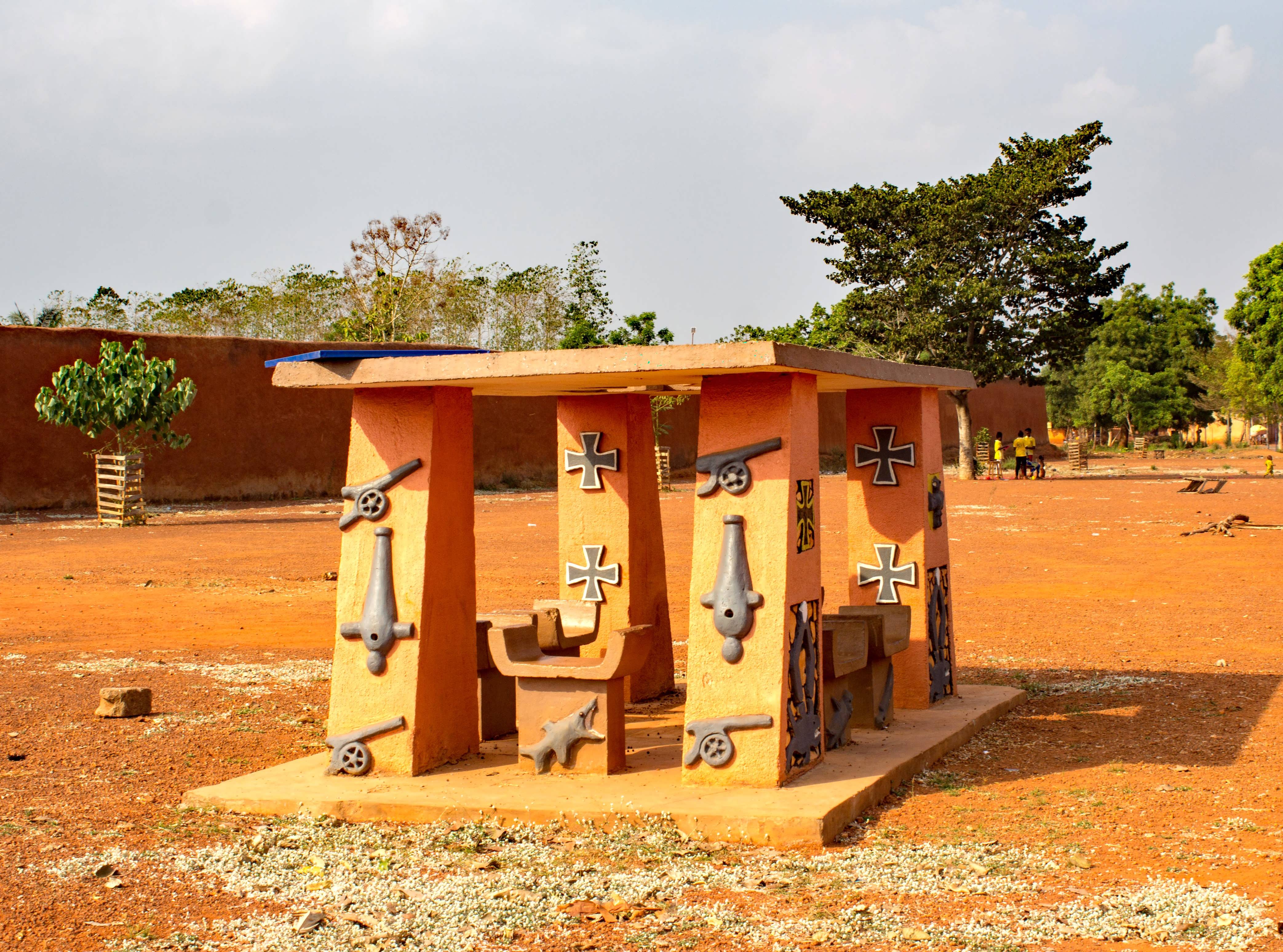If you’ve watched the 2022 film, The Woman King, starring Viola Davis, you’ll know the Agojie were the all-woman fighting force of Abomey, the capital of the Kingdom of Dahomey between the 17th and 19th centuries. The 6,000-strong force, raided villages under the cover of darkness, took captives and slashed off resisters’ heads to present to the king as trophies of war. They became known by European visitors as ‘Amazons’.
Now in Benin, Abomey has 12 former royal residences with each successive king building their own, as it was considered bad luck to live in a predecessors palace. Although a UNESCO site, the palaces of Kings Ghézo and Glélé are the only survivors, and they have been turned into the Historical Museum of Abomey, said to contain a throne mounted on human skulls. Disappointingly, like several of Benin’s museums, it was closed for refurbishment, and we had to content ourselves with walking on red dust paths through the 47 hectare sprawling site the palaces were built on. There were several wooden figures we were told were built on specific sites including the queen’s court or kitchen. But to be honest there was little to see, and without a map, it was hard to get a real understanding of the place and the scale of the site.
On the site of King Agoli Abobi’s palace, were new terracotta-coloured buildings where conserved, colourful bas-reliefs adorned both interior and exterior walls. These depicted the symbols of each king: King Agadja (1718 – 1740) was a blue boat with cream sail, whilst King Ghézo (1818 – 1859) was a forest buffalo.
One of the most interesting looking monuments had swastikas and cannons in bas-relief. It was built to honour the lives of three German and one Belgian soldier who fought alongside the Dahomey soldiers against the colonial French army between 1891 and 1894. The French had lost a cannon in an earlier war, and these four foreigners showed the Dahomey soldiers how to use it. The French, astonished by the sound of the cannon’s detonation, found the four white soldiers, painted black. However, they were recognized by the colour of their hair, arrested and executed.
Our guide also showed us the ackee tree, native to the Gold Coast. We were told that when the fruit ripens, it opens automatically to reveal three creamy coloured seed covers with black seeds underneath.
We finished what was a disappointing tour by avoiding a long row of souvenir stalls.












